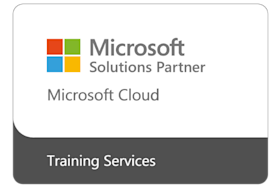Course subjects
Module 1: SQL Server Security
This module describes SQL Server security models, logins, users, partially contained databases, and cross-server authorisation.
Lessons
Authenticating Connections to SQL Server
Authorising Logins to Connect to databases
Authorisation Across Servers
Partially Contained Databases
Lab 1: SQL Server Security
Authenticating Connections to SQL Server
Authorising Connections to databases
Authorisation across server instances
Authorising Connections to databases
Module 2: Assigning Server and Database Roles
This module explains how to use roles at the server and database level to manage user permissions.
Lessons
Lesson 1: Working with Server Roles
Lesson 2: Working with Fixed Database Roles
Lesson 3: User-Defined Database Roles
Lab 1: Assigning Server and Database Roles
Module 3: Authorising Users to Access Resources
This module explains how to authorise users to access server and database roles. It also describes how to manage permissions at different levels in a SQL Server instance.
Lessons
Authorising User Access to Objects
Authorising Users to Execute Code
Configuring Permissions at the Schema Level
Lab 1: Authorising Users to Access Resources
Assigning Fixed and User-Defined Server Roles
Managing Database Roles and Users
Configure Permissions at the Schema Level
Module 4: Protecting Data with Encryption and Auditing
This module describes the available options for auditing and how to manage audit features. It also describes how to configure and implement data encryption.
Lessons
Options for auditing data access in SQL Server
Implementing SQL Server Audit
Managing SQL Server Audit
Protecting Data with Encryption
Lab 1: Using Auditing and Encryption
Module 5: Recovery Models and Backup Strategies
In this module, you will learn how to use the available backup features for databases and transaction logs to create backup strategies.
Lessons
Understanding Backup Strategies
SQL Server Transaction Logs
Planning Backup Strategies
Lab 1: Understanding SQL Server Recovery Models
Backup Databases
Transaction Log Backups
Shrinking a database
Module 6: Backing Up SQL Server Databases
In this module, you will learn how to apply various backup strategies.
Lessons
Backing Up Databases and Transaction Logs
Managing Database Backups
Advanced Database Options
Lab 1: Backing Up Databases
Module 7: Restoring SQL Server Databases
In this module, you will see how to restore user and system databases and how to implement point-in-time recovery.
Lessons
Lab 1: Restoring SQL Server Databases
Module 8: Automating SQL Server Management
This module describes how to use SQL Server Agent to automate jobs, how to configure security contexts for jobs, and how to implement multi-server jobs.
Lessons
Automating SQL Server management
Working with SQL Server Agent
Managing SQL Server Agent Jobs
Multi-server Management
Lab 1: Automating SQL Server Management
Module 9: Configuring Security for SQL Server Agent
This module explains how to configure SQL Server Agent to use a minimal privilege security environment and how to use credentials and proxy accounts to run jobs securely.
Lessons
Lab 1: Configuring SQL Server Agent
Module 10: Monitoring SQL Server with Alerts and Notifications
This module covers the configuration of Database Mail, alerts, and notifications for a SQL Server instance, and the configuration of alerts for Microsoft Azure SQL Database.
Lessons
Monitoring SQL Server Errors
Configuring Database Mail
Operators, Alerts, and Notifications
Alerts in Azure SQL Database
Lab 1: Monitoring SQL Server with Alerts and Notifications
Working with Database Engine Error Logs
Configuring Database Mail
Configure Operators and Alerts
Configuring Alerts in Azure SQL Database (Optional)
Module 11: Introduction to Managing SQL Server by using PowerShell
This module explains how to use Windows PowerShell with Microsoft SQL Server and Azure SQL Database. It also describes how to improve efficiency and reliability by scripting tasks and jobs.
Lessons
Getting Started with Windows PowerShell
Configure SQL Server using PowerShell
Administer and Maintain SQL Server with PowerShell
Managing Azure SQL Databases using PowerShell
Lab 1: Using PowerShell to Manage SQL Server
Exploring SQL Server Management Objects (SMOs)
Configure database and Instance features with PowerShell
Manage logins and backups with PowerShell
Create an Azure SQL Database with PowerShell
Module 12: Tracing Access to SQL Server with Extended Events
This module explains how to monitor performance metrics for SQL Server and Azure SQL Database. It also describes troubleshooting strategies and usage scenarios for working with Extended Events.
Lessons
Lab 1: Using SQL Server Extended Events
After completing this module, students will be able to:
Module 13: Monitoring SQL Server
This module explains how to monitor databases with the goal of proactively dealing with potential issues. It also describes how to use the built-in tools provided to analyse instance and server activity.
Lessons
Lab 1: Monitoring SQL Server
Module 14: Troubleshooting SQL Server
This module explains how to resolve common issues that may arise when working with SQL Server systems. It also describes a methodology for resolving general database server issues.
Lessons
Applying a Troubleshooting Methodology
Resolving Service-Related Issues
Resolving Connectivity and Login issues
Lab 1: Troubleshooting SQL Server
Troubleshooting errors
Troubleshooting services
Troubleshooting logins
Module 15: Importing and Exporting Data
This module explains how to use SQL Server native tools to import and export data to and from SQL Server and Azure SQL Databases.
Lessons
Transferring Data to and from SQL Server
Importing and Exporting Table Data
Using bcp and BULK INSERT to Import Data
Deploying Data-Tier Applications
Lab 1: Importing and Exporting data
Disabling and Enabling Constraints
Using the Import and Export Wizard
Import with bcp and BULK INSERT
Working with DACPACs and BACPACs

